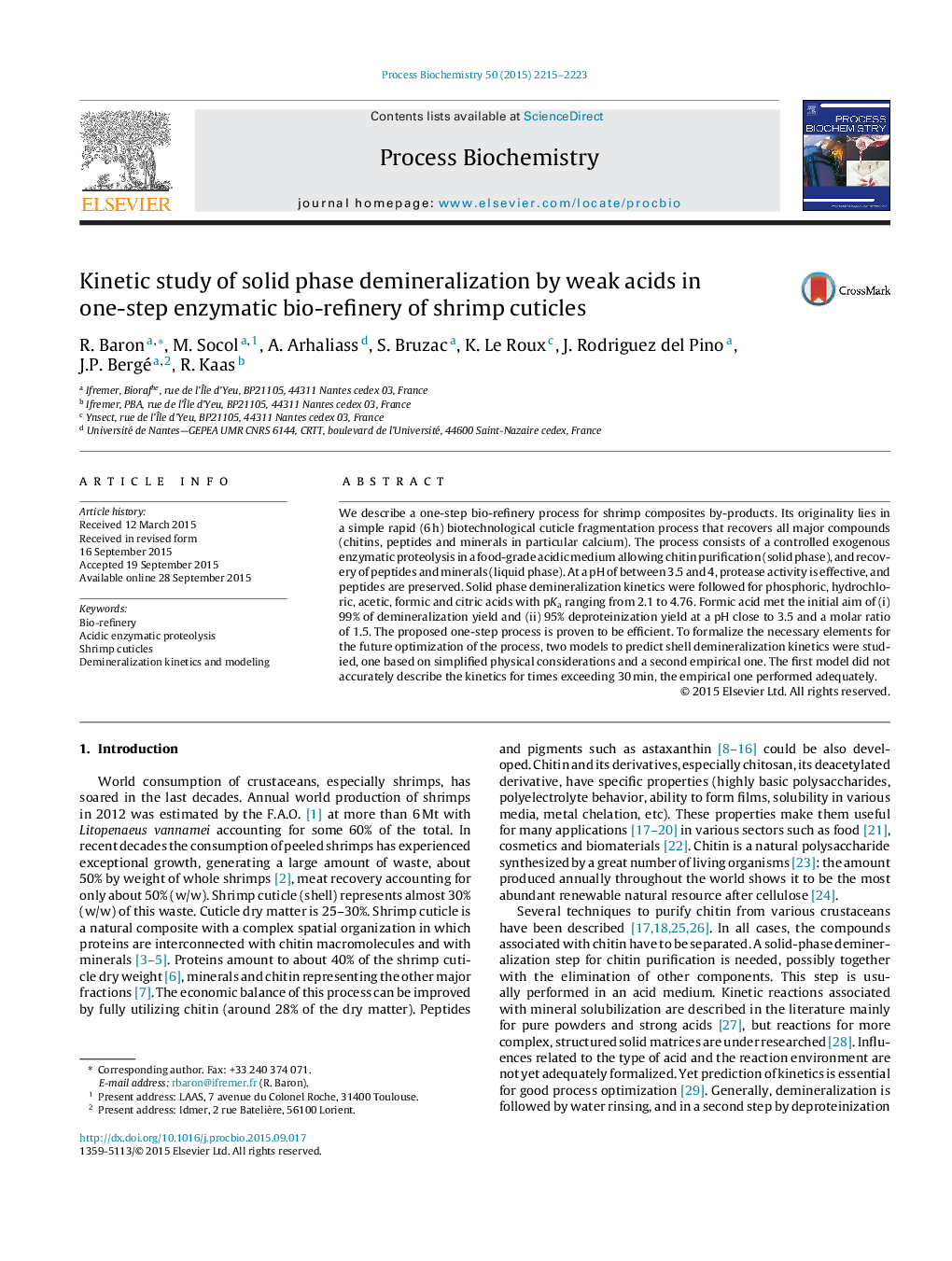| Article ID | Journal | Published Year | Pages | File Type |
|---|---|---|---|---|
| 34216 | Process Biochemistry | 2015 | 9 Pages |
•Formic acid met the initial aim of 99% demineralization yield and 95% deproteinization yield at a pH close to 3.5 and a molar ratio of 1.5.•The proposed one-step process proved efficient.•An effective empirical model of demineralization kinetics was defined.
We describe a one-step bio-refinery process for shrimp composites by-products. Its originality lies in a simple rapid (6 h) biotechnological cuticle fragmentation process that recovers all major compounds (chitins, peptides and minerals in particular calcium). The process consists of a controlled exogenous enzymatic proteolysis in a food-grade acidic medium allowing chitin purification (solid phase), and recovery of peptides and minerals (liquid phase). At a pH of between 3.5 and 4, protease activity is effective, and peptides are preserved. Solid phase demineralization kinetics were followed for phosphoric, hydrochloric, acetic, formic and citric acids with pKa ranging from 2.1 to 4.76. Formic acid met the initial aim of (i) 99% of demineralization yield and (ii) 95% deproteinization yield at a pH close to 3.5 and a molar ratio of 1.5. The proposed one-step process is proven to be efficient. To formalize the necessary elements for the future optimization of the process, two models to predict shell demineralization kinetics were studied, one based on simplified physical considerations and a second empirical one. The first model did not accurately describe the kinetics for times exceeding 30 min, the empirical one performed adequately.
Graphical abstractFigure optionsDownload full-size imageDownload as PowerPoint slide
